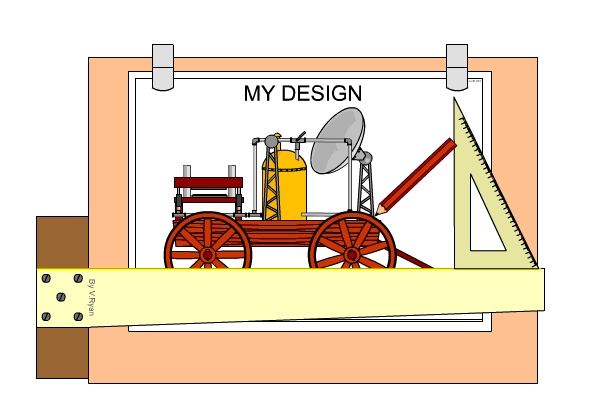|
The Importance of Notes:
Whenever you present an idea or draw an existing product you must add plenty
of explanatory notes. This applies to all parts of your project including
research and ideas sections.
What Type of Notes?
You must comment, in detail, on all aspects of your design. A few words on
the following are definitely recommended:
1. What do you think of the design?
2. What do you think of the colour scheme?
3. How much will it cost to produce?
4. Is the design safe?
5. Will you buy it?
6. Will you find it useful?
7. Does your idea answer the design problem?
8. Is the design too large or small?
9. Is it designed ergonomically?
10. Will it suit the age range that it is designed for?
11. What materials will be used in it’s manufacture? Why?
You may find these questions useful as they will get you thinking about what
should be written as notes next to each drawing. Always make sure that the
notes are a good paragraph in size, easy to understand and well presented.
Alternatively, arrange the notes around the idea.
Print in block capitals or adopt a simple style of writing. Keep to the same
style for this section of the design process. |
|
|
|
The diagram below shows how an idea with its notes can be
set out on a design sheet. |
| |
|
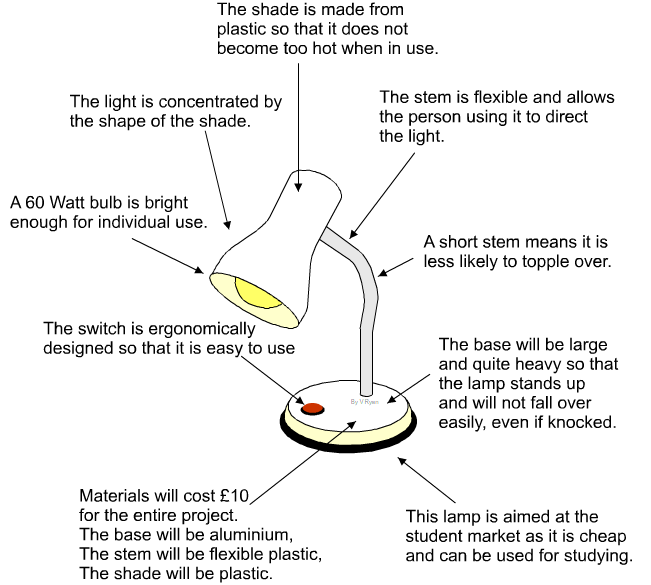
|
|
|
| What Style of
Drawings should I Use? |
| |
You should use a mixture of two and
three dimensional drawing techniques to present any ideas.
Graphic Products Course :
two point perspective,
single point perspective,
oblique projection,
isometric projection,
front and side views,
sectional views,
exploded diagrams.
Use a number of the above techniques and before you decide look at some
examples.
Other Technology Courses
Use two to three of the above techniques.
Use appropriate colouring techniques and try not to crush all your ideas on
one sheet. Two to three ideas per sheet is just about right. |
| |
|
|
Some Other Suggestions |
|
Sometimes the best way to start designing is to take an existing design and
alter/improve it. This is probably what most professional designers do.
If you design in this way - improve the existing design, alter the colour
scheme, change the materials it is composed of and alter the size etc....
|
| |
|
|
|
| |
|
|
MORE INFORMATION REGARDING THE IDEAS SECTION |
| |
|
|
One of the most important sections of a design project is
the ideas section. Drawing designs / ideas is possibly the most enjoyable
aspect of project work. This is the section in which you must show your
imagination. The examiner will look closely at the ideas you produce and the
way you present them and the quality of notes you include with each. Try to
produce a minimum of four ideas and aim for up to six well drawn and
annotated ideas. You may wish to start by looking at an existing idea and
altering it / improving it. Be innovative. |
| |
|
1.
Research very carefully into ideas / products that already exist. The
internet is usually a good resource. Looking at existing designs will help
you design your own product.
2. Always include plenty of relevant
notes.
A. What do you think of the design?
B. What do you think of the colour scheme?
C. How much will it cost to produce?
D. Is the design safe?
E. Would you buy it?
F. Would you find it useful?
G. Does your idea answer the design problem?
H. Is the design too large or small?
I. Is it designed ergonomically?
J. Will it suit the age range that it is
designed for?
K. What materials will be used in it’s
manufacture? Why are they suitable?
3. Keep your drawings simple and clear. You may
wish to draw your idea from different angles, in perspective, isometric,
from the front, top or side.
4. Add colour and shade but do not spend too
much time on this aspect of each drawing. Sometimes it may be better to keep
a design to a ‘line drawing’, without any colour / shade.
5. Ask the views of other people, especially if
you are drawing rough designs before transferring them to your design
sheets. You may learn a lot from the views expressed by other people.
6. When you write your notes about each of your
ideas tell the truth. You may concentrate on the way the idea needs
improving rather than concentrating on all the good points.
7. Produce a range of different ideas not a
number of similar looking ones. |
| |
|
| SAMPLE IDEAS
SHEET |
| |
|
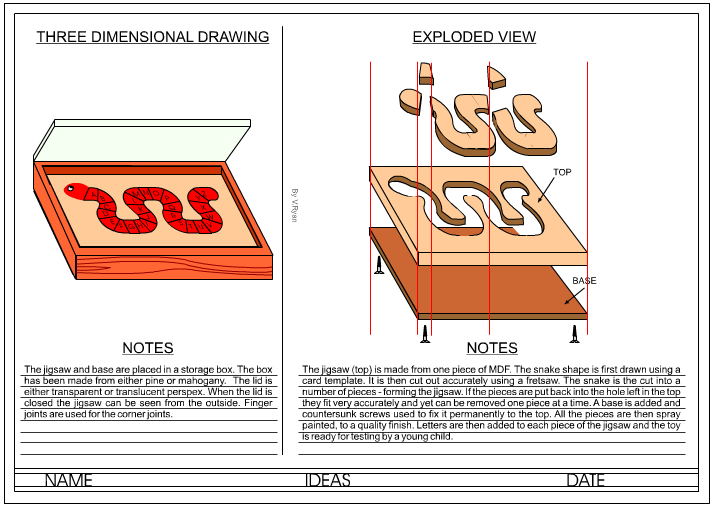 |
|
|
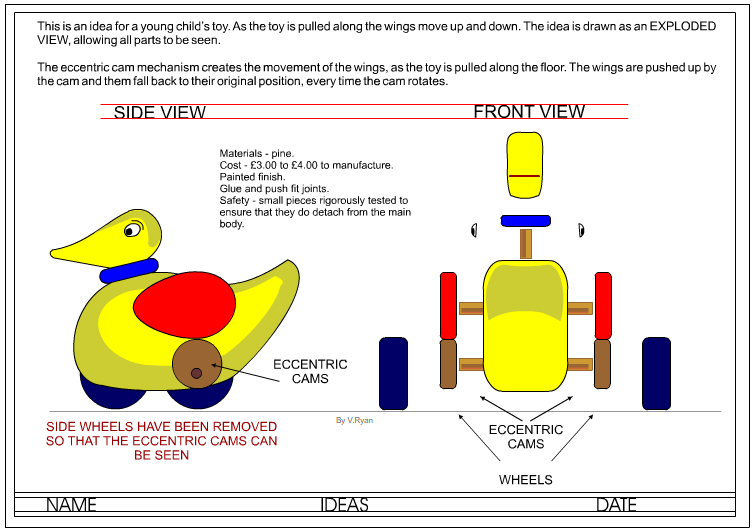 |
|
|
|
|
|
|
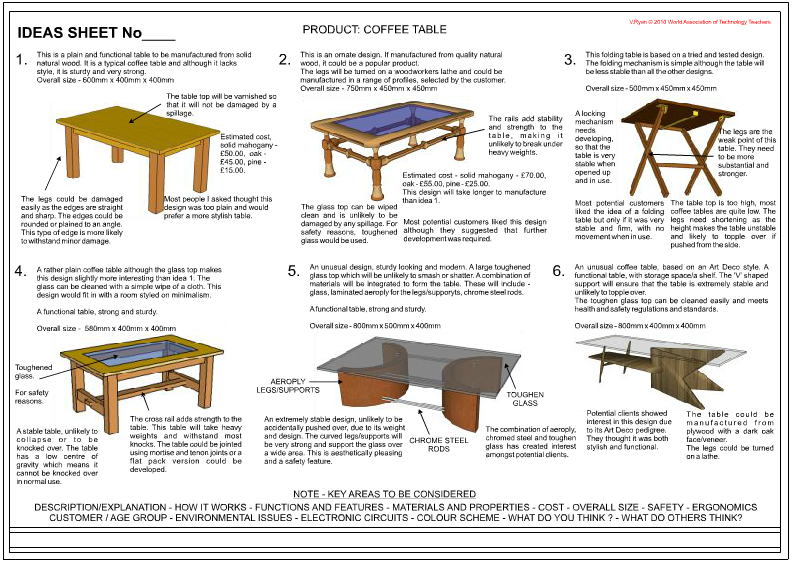 |
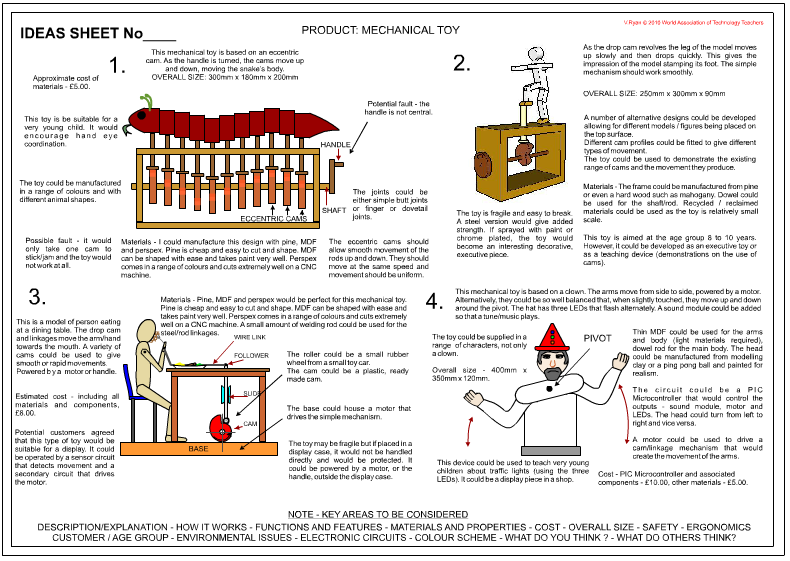 |
|
|
|
SUGGESTIONS:
A. Draw rough ideas first and ask the
opinion of other people - keep notes about what they say.
B. Draw clear designs, keep each one
simple.
C. Include detailed notes (Look at the
questions seen opposite - point 2)
D. Draw between four to six ideas.
Remember, each design should be different.
E. Complete your homework on time. Do
not fall behind as you may find it impossible to catch up. |
| |
|
| |
|
|
CLICK HERE FOR MORE EXAMPLE IDEAS SHEETS |
| |
|
|
CLICK HERE FOR DESIGN PROCESS INDEX
PAGE |
|
|
|
|
|
|
|
|
|
|
